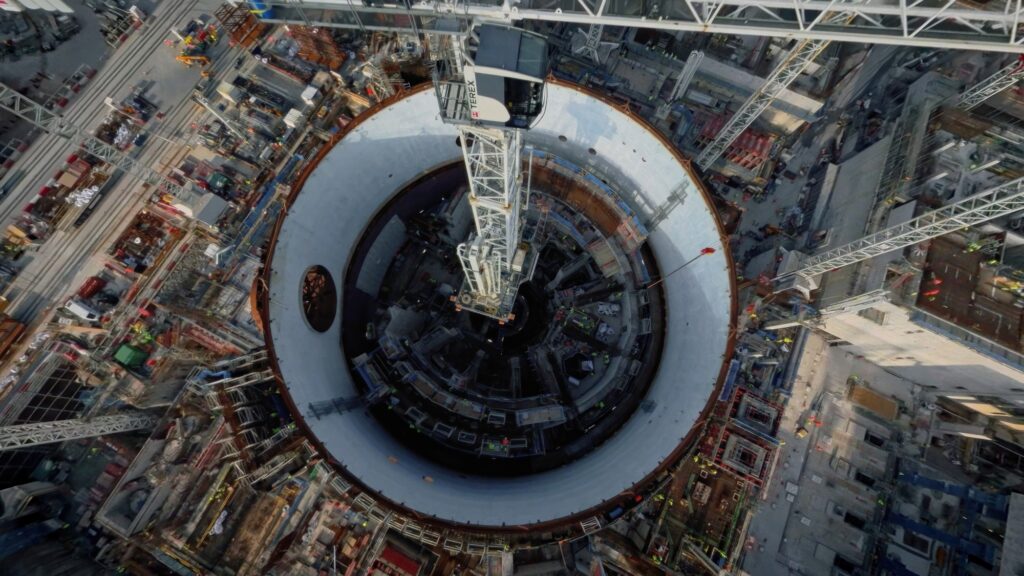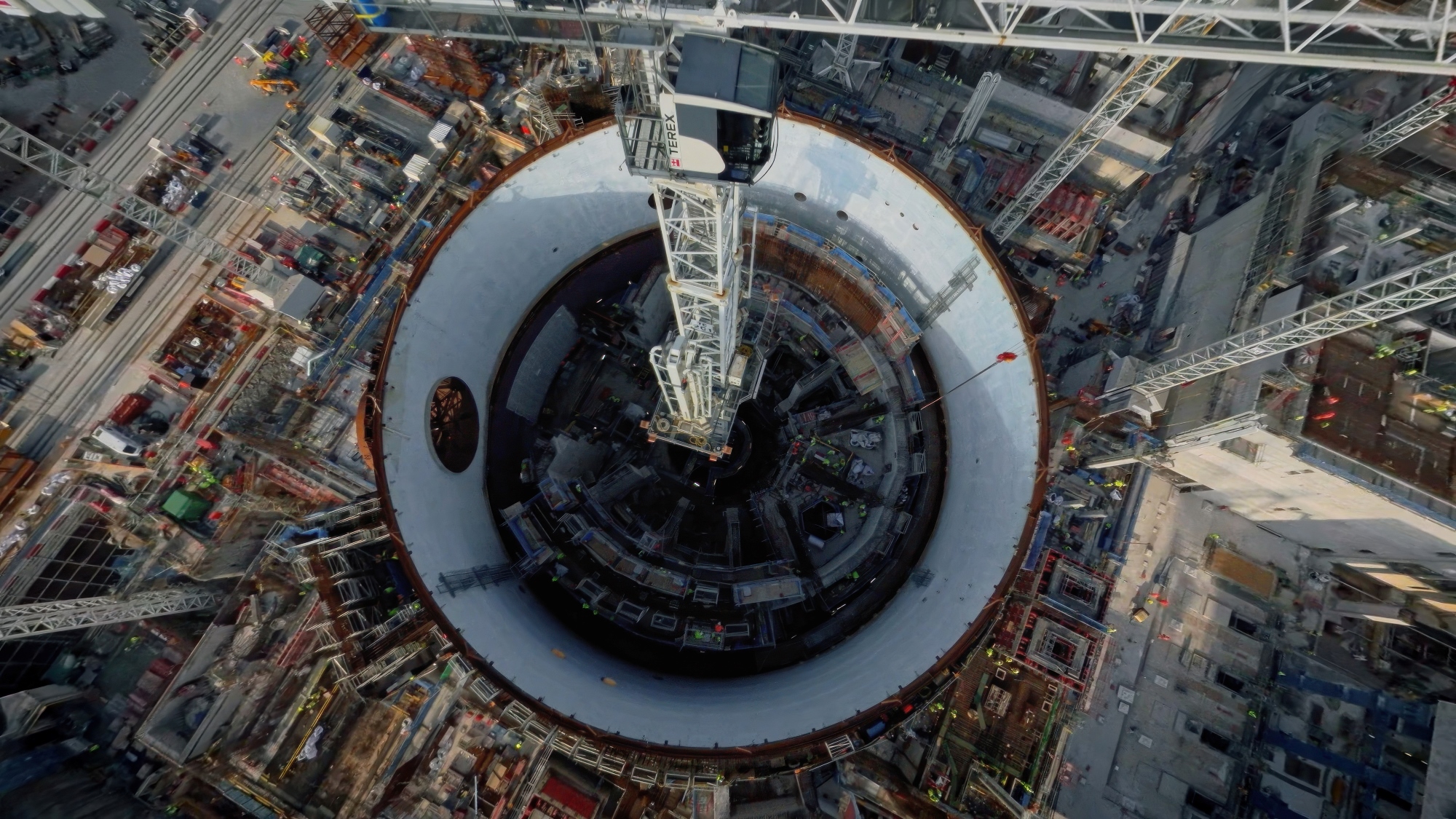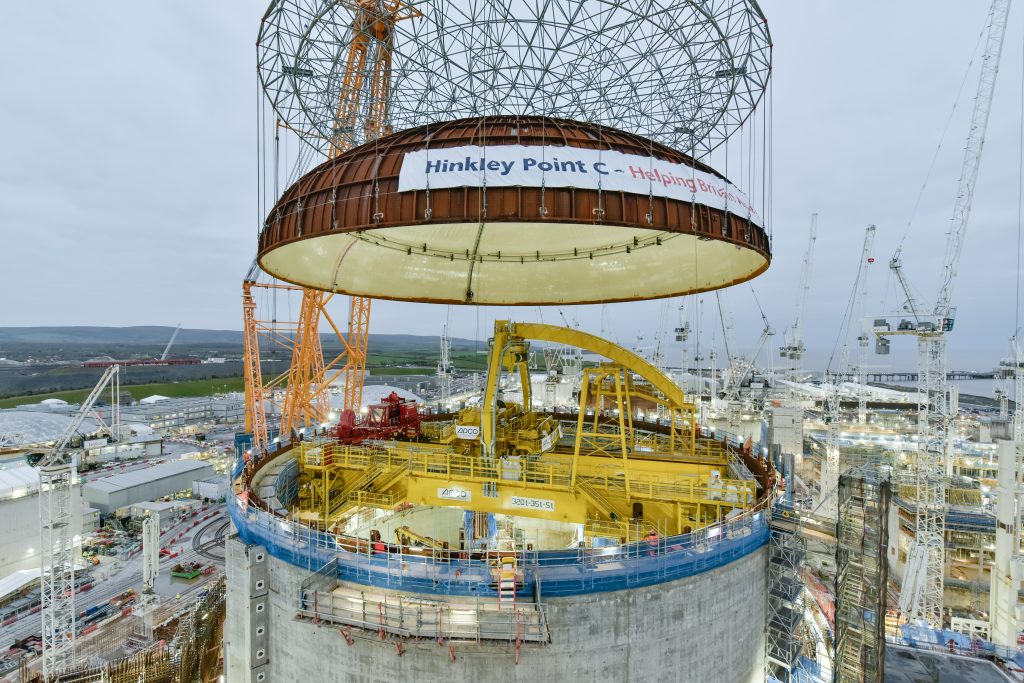Hinkley Point C | Efficiency increasing 20-30% as team gears up for first reactor installation

This post was originally published on this site
Hinkley Point C has said it is building the second unit of the nuclear power station 20-30% faster than the first thanks to learning more efficient construction methods.
The latest update from the Somerset site also reveals that engineers are gearing up to install the first reactor – described as the “beating heart of the power station” by Hinkley Point C nuclear island director Simon Parsons.
Speeding Up Unit 2

Overhead view of Unit 2 reactor building, July 2024
Parsons said that work on Unit 2 is looking up to make up for the time lost during the pandemic. This will be capped by the installation of the final ring section on the reactor building this year before the dome is lifted into place in 2025.
“We are typically building Unit 2 20 to 30% faster. It’s the same job, but we’re learning better ways to do it,” Parsons said. “For example, we’re pioneering a new welding method on the reactor pool that is four times faster than the first time around.
“More modularisation allows us to construct larger parts in factory conditions before being lifted into the buildings with the world’s largest land-based crane, Big Carl.
“And with our design adapted to British regulations and complete in detail, suppliers know exactly what to make.
“And every innovation here is being incorporated into our plans to build Units 3 and 4 at Sizewell C in Suffolk.”
The plan from EDF is to replicate Hinkley Point C at Sizewell C to minimise costs and increase efficiencies.
Last spring, AtkinsRéalis nuclear new build market director Tom Lambkin told NCE: “The whole philosophy from Hinkley Point C to Sizewell C is no change, it’s pure replication. It’s a repetition of a design that’s already been built within the UK regulatory environment.”
The implication of Parsons’ comments during his update video from Hinkley Point C is that the efficiencies achieved at Unit 2 could be further expanded at Sizewell C’s Units Three and Four.
This will be welcome as the cost and timescale of Hinkley Point C has continually slipped. When consented in 2016 it was expected to cost £18bn and come online in the mid-2020s, but the latest update provided by EDF in January said cost is now expected to hit £34bn (in 2015 prices) and the nuclear station is not expected to see its first reactor become operational until 2030.
Installing first reactor and looking ahead

Drop into Unit 1 Reactor pool, July 2024
A 750t polar crane was lifted onto the first reactor building at the end of 2023 and is now being commissioned for its first job: lifting the reactor and steam generators into position.
“They’ll be brought in the reactor building on rails through the equipment hatch,” Parsons said. “The reactor will then be carefully lifted into the reactor [cavity] pool here, where it will stay for its operational life.
“Next the steam generators will be placed alongside the reactor. They’ll take the heat from the reactor to generate steam to power the world’s largest turbine. Each one weighs 520t and is 25m tall. The first pair arrived on site in May. The steam they produce will be used in the Turbine Hall next door.”
Inside the Turbine Hall, Parsons pointed out the 300t gantry crane that will be used to lift parts of “the world’s largest steam turbine, the Arabelle” later in 2024.
He also said that the main control room for Unit One which is between the turbine hall and reactor building is “a great example of modular construction and is now being fitted out for operations”.
Work in the Electrical Building is also ramping up with the installation of the power equipment for the plant. “A big focus this year is completing these rooms and fitting the miles of pipes and cables and equipment,” Parsons said. He added that there are over 110km of 10kV power cables to install to connect transformers to switchboards to power the station.
The video also provides updates and imagery from the Pump House, where construction is “close to reaching the roof level”, and work under the Bristol Channel where engineers are working to connect six vertical shafts to the tunnels that have been built.
The timing of the video suggests Hinkley Point C wants to position itself as part of the answer to the net zero challenge facing the government which the UK is voting to elect today.
At the end of his speech, Parsons said: “You’ve seen the real progress we are making here in Somerset. Next time you’ll see our really big pieces of equipment in place and our MEH colleagues will be taking over to complete the fit out of our fantastic power station.
“A big thank you to everyone on site for your hard work and to thousands of people in our factories all around the country and around the globe. Together we will help Britain achieve net zero and provide greater energy security.”
The UK has a legally binding target of 2050 to achieve net zero. The Labour Party, likely to form the next government, has committed to a zero-carbon electricity system by 2030.
Like what you’ve read? To receive New Civil Engineer’s daily and weekly newsletters click here.





Responses